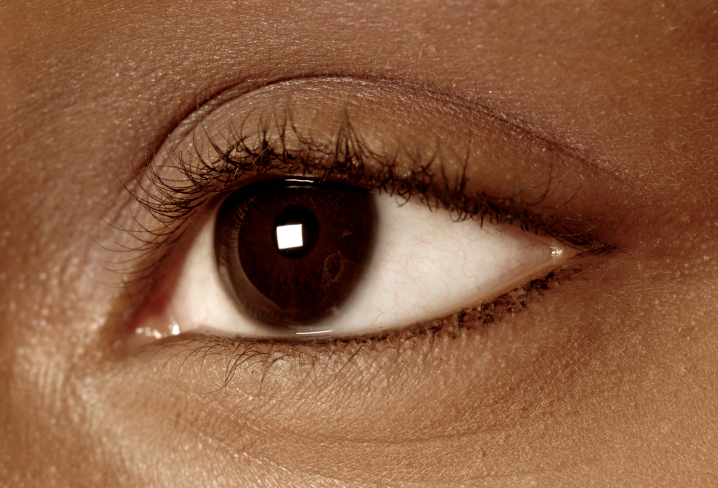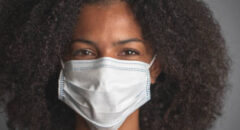
Did you grow up thinking pinkeye was the result of rubbing the eye after neglecting to wash your hands? How about a stye on your eye?
Did your friends think you were eating your boogers or watching dogs mate if you had one? There are many myths surrounding these two eye infections.
Recently, in the Vice-Presidential debate of 2020, many believed that Vice President Mike Pence had pinkeye.
This led many to believe that he should be at home in quarantine rather than at a debate. It even became a trending topic on Twitter. But is pinkeye a sign of COVID?
Here's the real deal:
"Some COVID-19 patients have ocular symptoms, and maybe novel coronaviruses are present in the conjunctival secretions of patients with COVID-19," said researcher Dr. Liang Liang of the ophthalmology department at China Three Gorges University in Yichang.
Liang went on to say that the coronavirus may invade it in patients with severe COVID-19 pneumonia.
That means the virus can be spread if someone rubs an infected eye and then touches someone else -- or during an eye examination, the study authors suggested.
Is he ok? pic.twitter.com/77qDCYdFGr
— Padma Lakshmi (@PadmaLakshmi) October 8, 2020
Most cases of pinkeye are caused by adenoviruses, according to the Mayo Clinic. These are very common viruses that can cause symptoms including fever, coughs, sore throats, and diarrhea.
According to AllAboutVision.com, pinkeye, also known as conjunctivitis, is the inflammation of the sclera (the thin, clear covering of the white part of the eye) and conjunctiva (the inside of the eyelid).
The conjunctiva contains blood vessels that overlay the sclera. When infected, the blood vessels dilate, causing the eye to turn “pink.”
While conjunctivitis can be caused by feces and other bacteria, it can also be the result of a virus, such as a cold, or allergy. Among doctors, the term “pinkeye” is used specifically to discuss viral infections.
READ: Where Do Styes Come From?
If your pinkeye results in a thick, yellowish discharge in the corner of your eye, it's most likely bacterial conjunctivitis and may require medical attention.
Viral conjunctivitis, on the other hand, rarely requires medical treatment and usually heals on its own. Applying a cold towel over the eye a few times per day may alleviate discomfort.
Pinkeye is most common among children and students and is highly contagious towards teachers and daycare employees.
While Pence has so far tested negative for COVID-19, he was present at several events with other White House staff and senior Republicans who have since tested positive, including a campaign rally on Sept. 25 in Virginia; the celebration at the White House of Supreme Court nominee Amy Coney Barrett on Sept. 26, which has been described as a likely "superspreader" event; and a Gold Star families reception on Sept. 27.
A new article just came out that called the White House, a "super spreader" source where it's more likely to get infected and spread COVID from there.
So what about styes? Should you be worried if you have a stye on your eye during COVID?
A stye, or hordeolum, is the effect of an oil gland infection that occurs on the edge of the eyelid.
This happens after staphylococcus bacteria, a bacterium usually found in the nose, makes contact with the eye.
A stye looks similar to a pimple and it can grow either inside or outside of the eye. The most common symptoms of a stye are pain, swelling and redness.
READ: Q&A: Why Do My Eyelashes Hurt?
If you have a stye, it's best to let it go away on its own. Unfortunately, rubbing a gold ring on your eye will not make it disappear.
Popping it, as you would a pimple, may cause further infection. It's best to apply light pressure to the effected area with a warm towel a few times a day until it goes away.
Most styes last for only a couple of days.
If it lasts longer than a few days, you may need to visit your eye doctor. In most cases, the optometrist will either prescribe an antibiotic ointment or drain the stye.
While styes rarely cause vision impairments, they are contagious. So, if you have a stye, be sure not to share anything that has made contact with the affected area. This includes pillowcases, makeup, towels, etc.
Both pinkeye and eye styes can be prevented by frequently washing your hands and avoiding contact with personal items that belong to someone else, such as a washcloth or makeup.
In both cases, it's best to avoid wearing makeup or contact lenses until the eye has healed.
Thoroughly clean or replace items that may have been in contact with your eye when the infection began if you plan to continue using them after the infection has healed.
For more great articles, click here.








